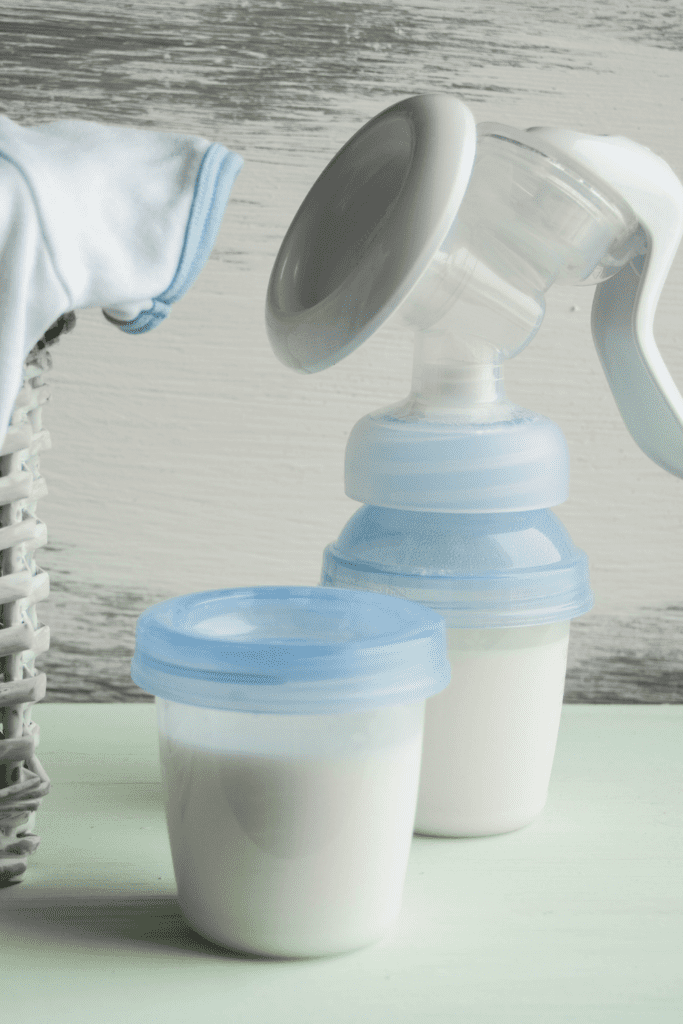
Are you a mama who is thinking of continuing to breastfeed your baby beyond six months? Is a drop in breast milk supply getting in your way?
There are a few reasons why you could be experiencing a drop in breast milk supply, and luckily there are a few ways you can increase your milk production.
How Long Should You Breastfeed?
There is no exact answer to this question, as breastfeeding is a very personal journey.
The American Academy of Pediatrics recommends that babies be breastfed exclusively up until six months of age. After six months, breastfeeding can continue along with introducing solid foods.
There are many benefits of continuing to breastfeed. According to Medela, “Continuing to breastfeed after six months has been shown to lower the chances of some childhood and adult illnesses and, if your baby does get ill, helps him recover more quickly.”
Some mamas find that they have a drop in milk supply around this time, though.

Why Does Breast Milk Supply Decrease?
There are a few reasons why the amount of breast milk you make drops, including poor attachment, mastitis, and not draining your breasts completely.
The way your baby latches onto your breast when feeding can determine how much milk they get. Your breastmilk supply can therefore be interrupted if your little one is unable to fully drain the milk from your breasts.
An incorrect latch can also cause mastitis, inflammation of the breast tissue caused by blocked milk ducts.
Making breast milk also requires a ton of calories, so what you eat or don’t eat can have an impact on your supply.
Here’s some good news for caffeine lovers: There is no evidence that caffeine decreases breast milk supply. Plus, very little caffeine actually makes it into your breast milk. However, it can still affect some babies, so observe your baby to see if caffeine impacts their quality of sleep.

How Do You Know If Your Baby Is Getting Enough Milk?
Six to nine month old babies should be getting around four to eight ounces of breast milk at each feeding (every three to four hours).
Another indication of whether your baby is getting enough calories is their weight. Parents explains, “Starting at six months, a baby will grow about half an inch a month and gain three to five ounces a week.”
3 Ways To Boost Your Breast Milk Supply
- Full Feedings
Breast milk works on a supply and demand basis. “The more frequently and effectively she breastfeeds, the more milk you’ll make,” says Medela. So, if your little one doesn’t drain your breasts completely during a feed, this tells your body that it produced too much milk, so it will make less in future.
- Put In A Milk Order
Pump straight after feeding your baby. Think of this as putting in a milk order. By doing this, you’re telling your body that it needs to produce more milk. Power pumping is when you pump straight after breastfeeding for 10 to 20 minutes, which helps to empty your breasts completely. Power pump after every feed for three days to help increase supply.

- Don’t Skip Feedings
At six months old, you may be starting to introduce solid foods to your baby. Solids may then be replacing some breast milk feedings. However, if you want to keep breastfeeding after six months, it’s important to still use the milk your body is making. Pump when your baby skips a breastfeeding session and store the milk. Download my free pumping log and breast milk storage guide.
Breastfeeding may be natural, but it can also be full of questions and challenging moments. Can I switch to formula? Is my baby still hungry? Should I feel pain while breastfeeding? Is my baby growing? Could I mix breastmilk with formula? These are just some of the common questions breastfeeding moms struggle with. Schedule a consultation with a Baby Settler lactation consultant to help you feel more confident in your breastfeeding journey.




